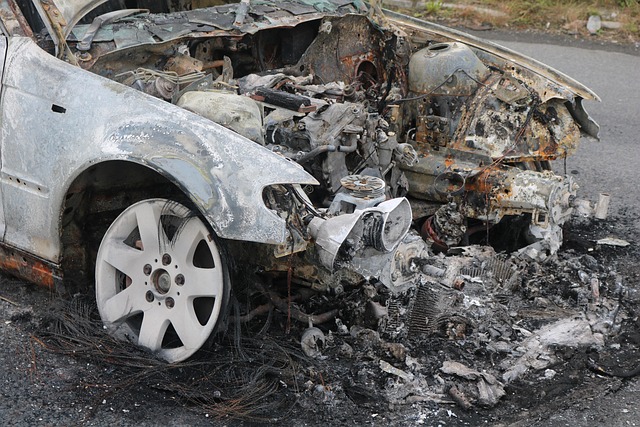Car accidents can be overwhelming, disorienting, and traumatic. Whether it’s a minor fender-bender or a more serious collision, knowing what steps to take immediately after the incident can significantly influence your safety, well-being, and legal rights. This comprehensive guide will walk you through each step to take following a car accident, ensuring you handle the situation with confidence and clarity.
Step 1: Ensure Safety First
Move to a Safe Location
If the accident is minor and vehicles are operable, move them to the side of the road to avoid further hazards. Turn on your hazard lights and set up reflective emergency triangles if available. Doing so can prevent additional accidents and create a safer environment for everyone involved.
Check for Injuries
Assess yourself and passengers for any injuries. If anyone is hurt, do not attempt to move them unless there’s an immediate danger, such as a fire or risk of explosion. Waiting for professional medical assistance is always the safest option.
Call Emergency Services
Dial 911 regardless of the accident’s severity. Even if injuries seem minor, it’s essential to have medical professionals on the scene. Law enforcement will also create an official report, which is crucial for insurance and legal purposes. Responders may also help manage traffic, ensuring that the accident does not cause further disruptions.
Step 2: Document the Scene
Exchange Information
Share and collect essential information from the other driver(s), including:
- Full name and contact details
- Insurance company and policy number
- Driver’s license and license plate number
- Vehicle make, model, year, and color
- Location of the accident
Take Photos and Videos
Use your smartphone to document the scene from multiple angles. Capture vehicle damage, road conditions, traffic signs, skid marks, weather conditions, and any visible injuries. This evidence can be vital when filing insurance claims or pursuing legal action. The clearer and more comprehensive your visual records, the stronger your case may be.
Speak to Witnesses
If there are any bystanders or witnesses, get their names and contact information. Their statements could corroborate your account of the accident. Be respectful and concise when asking for their version of events, and ensure you record their input accurately.
Step 3: File a Police Report
In many states, you’re legally required to file a police report after an accident, especially if there are injuries or significant property damage. The responding officer will document the incident and may provide you with a copy or a report number.
What the Police Report Should Include:
- Date, time, and location of the accident
- Statements from drivers and witnesses
- Diagram of the scene
- Officer’s observations and conclusions
- Citations issued, if any
If law enforcement does not respond to the scene, visit the nearest police station to file a report yourself. Retain a copy for your records.
Step 4: Seek Medical Attention
Even if you feel fine, some injuries may not be immediately apparent. Conditions like whiplash, concussions, and internal bleeding might manifest hours or days later. Visit a doctor or hospital to get a full evaluation.
For more information on medical care following a traumatic event, you can refer to this comprehensive article on health care.
Keep All Medical Records
Document every medical appointment, treatment, diagnosis, and prescription. These records serve as critical evidence when seeking compensation for injuries. Your physician’s notes, prescriptions, diagnostic imaging, and treatment plans will all play an essential role in your insurance or legal claim.
Common Post-Accident Injuries:
- Soft tissue injuries (sprains, strains)
- Head injuries (concussions, TBIs)
- Broken bones and fractures
- Lacerations and bruises
- Psychological trauma (anxiety, PTSD)
Monitor how you feel over the days and weeks following the accident and seek follow-up care if needed.
Step 5: Notify Your Insurance Company
Contact your insurance provider as soon as possible. Provide them with accurate details of the accident and share any documentation you’ve gathered. Delaying this step could affect your ability to file a claim.
What to Share with Your Insurer:
- The police report number
- Photos and videos of the scene
- Witness contact information
- Medical reports and expenses
- A description of how the accident occurred
Cooperate but Be Cautious
Answer your insurance adjuster’s questions truthfully, but do not speculate or admit fault. You have the right to consult with an attorney before making official statements.
Step 6: Understand Your Legal Rights
Depending on the accident’s severity, you might be entitled to compensation for medical bills, lost wages, vehicle repairs, and emotional distress. Consulting a legal expert ensures you protect your rights and explore all available options.
It’s important to speak with a qualified car accident lawyer who can help you navigate the legal process, especially if you’re dealing with insurance disputes or severe injuries. An attorney can also ensure you meet filing deadlines and gather the necessary evidence to support your case.
Step 7: Follow Up and Monitor Your Health
Monitor Symptoms
Keep a health journal and note any changes in physical or emotional well-being. Symptoms like headaches, dizziness, mood swings, or sleep disturbances could indicate delayed injuries such as traumatic brain injury or PTSD. Record dates and symptoms in detail.
Continue Medical Treatment
Attend all follow-up appointments and adhere to your treatment plan. Stopping medical care prematurely can not only hinder your recovery but also affect your compensation claim. Insurance companies may interpret missed appointments as a sign that your injuries aren’t serious.
Communicate With Your Doctor
Maintain open communication with your healthcare provider. Report any new symptoms immediately, and ask questions to fully understand your diagnosis and prognosis.
Step 8: Repair Your Vehicle
Once the initial chaos has settled, get your vehicle inspected by a certified mechanic. Obtain a written estimate of the damage for your insurance claim.
Choose a Trusted Auto Body Shop
Many insurance companies have preferred repair shops, but you’re generally free to select your own. Read reviews, ask for certifications, and compare estimates before deciding.
Document the Repair Process
Keep all receipts, work orders, and communication related to your vehicle’s repairs. These documents may be needed to prove the full extent of your damages.
Step 9: Consider Mental Health Support
The emotional toll of a car accident can be significant. It’s common to experience anxiety, depression, or fear of driving afterward. Seeking mental health support can aid in your recovery process.
Options for Mental Health Support:
- Therapy or counseling sessions
- Support groups for accident survivors
- Stress-relief techniques such as meditation or yoga
- Cognitive Behavioral Therapy (CBT)
- Medication (prescribed by a mental health professional)
Mental health is just as important as physical health. Don’t hesitate to ask for help if you’re struggling.
Step 10: Stay Informed and Prepared
Know the Local Laws
Laws regarding car accidents vary by state. Familiarize yourself with your state’s reporting requirements, statute of limitations for filing claims, and liability rules. This knowledge can empower you to take the right actions at the right time.
Keep an Emergency Kit in Your Car
Preparation can make a huge difference in emergencies. Your car emergency kit should include:
- First-aid supplies
- Flashlight and extra batteries
- Jumper cables
- Blankets
- Reflective triangles or flares
- Basic tools and tire repair items
- Non-perishable snacks and water
- Phone charger or power bank
Having these essentials on hand can help you stay calm and safe in the event of a future emergency.
Review Your Insurance Policy
Understand what your policy covers, including liability limits, collision and comprehensive coverage, and any exclusions. Ask your agent to clarify anything that’s unclear.
Final Thoughts
Being involved in a car accident is a stressful experience, but taking the right steps can protect your health, finances, and legal standing. Prioritize safety, gather all necessary documentation, and seek both medical and legal guidance as soon as possible.
Whether you’re dealing with injuries, property damage, or emotional trauma, following this step-by-step guide can help you manage the aftermath of a collision effectively. Staying informed and prepared can help you regain control and move forward with confidence, ensuring the road ahead is safer and more secure.

About the author: L. Tucker
Early in his journalism career, Kerry L. Tucker had a revelation: there were not enough experts reporting on law issues. Legal matters are part of daily life. Yet, there seems to be a general aversion towards them. One of the main reasons for this is that the convoluted legal language is difficult for many people to follow. Therefore, he decided to change how the law is perceived by the public. Throughout his career, he met with many people who shared their personal stories with him. Some of these hit him harder. One of the cases that stayed with him and influenced his future career development was a car accident case involving a child. From then on, he decided to zero in on car accident lawsuits.
